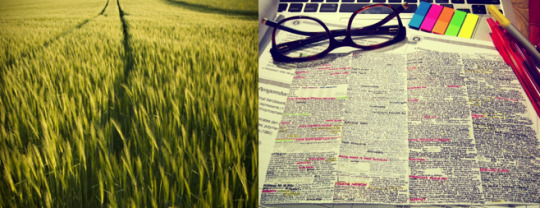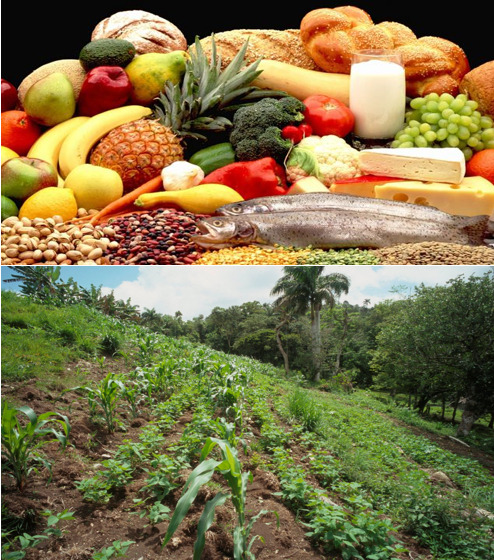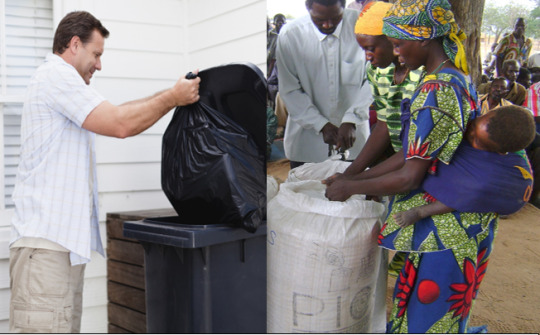Photo

More is better. Not always, like more assignments is not better, or more dirty dishes. But with things that are good or that you need, more is generally better. Exam cheat sheets for example, the more answers you can cram onto that sheet of paper the more likely you are to do well on the test. Granted you do want a level of organisation so you can navigate it easily.
More is also better when it comes to crops, no substance farmer would say no to more yields or profits, so why would it be any different for plants? In fact aside from greater crop yields, densely planted crops also suppress weeds!
Why is this such a big deal?
Women substance farmers will spend 50% of their time weeding their crops, therefore stealing their time and energy away from other projects and jobs. So by planting their crops more densely they are actually saving time.

But what about competition for nutrients between the plants?

Competition is definitely something to consider but there are ways to avoid the negative effects of it. For instance planting a few different crops with different root depths, allows them to draw water and nutrients from various points.
Or hillside substance farmers can plant in areas that weren’t previously in use (like the vertical sides of terraces). These additional plants’ rooting systems can also help reduce erosion and runoff.

Ergo More=Better.
0 notes
Photo

Deciding to never clean up your room may not be the best idea, you could step on something sharp or have to deal with rotting food. However this isn’t a problem for plants, partly because they don’t have rooms but mostly because refusing to clean up plant waste (something called no till agriculture) is actually great for the health of the soil and future plants.
Erosion is a common problem for Hillside farmers and continual tilling only aggravates it. No till agriculture however is amazing in many many ways.
How many? Lets count them out.

1. Tillage breaks up the soil, worsening erosion, no till doesn’t
2. In no till the leftover plant residue is left on the field, thus the nutrients from the plant matter is returned to the soil, prepping the soil for the next season.
3. The residue also protects the soil from water erosion as it takes the brunt of the energy from rain and slows down the force of water runoff.
4. Leaving the dead plant roots in the ground improves the soil structure.
5. The farmers don’t have to clean up after their plants, just imagine how amazing it would be to never have to clean your room...

0 notes
Photo

Popcorn is awesome, microwavable popcorn even better. so little effort and money is required for that bag of enjoyable fluffy kernels. But do you know what’s an even better deal? 80 kg of shelled corn for female subsistence farmers.

How? Through an awesome, super cheap, and super simple tool, aka the corn sheller. This handy device greatly cuts down labour and time requirements. Sadly, a ridiculous amount of farmers still process their crops by hand simply because they do not have access to this simple technology. The corn sheller costs only a couple of dollars and therefore is well within the reach to those whom it would be invaluable. There is also great potential in the making a sheller by hand using just a scraps of metal.
Yes, it’s that easy.

This is really important to subsistence farmers who many times spend many months labouring and caring for a crop only to have huge losses in production and storage.
To learn more about how the corn sheller can change the lives of farmers in developing nations and ways you can help too check out the link below!
http://www.kopernik.ngo/technology/corn-sheller-corn-sheller
0 notes
Photo

Just as you need a diverse diet (I’m looking at you Kraft dinner), it turns out plants kinda do too. They, like you require a variety of macro and micro-nutrients, however some like nitrogen are hard to come by. Without these nutrients the plants can’t grow big and strong (just like mama promised). Jokes aside this is a serious problem for substance farmers whose food and profits are dependent on their crop yields.
Since different plants require and contribute different nutrients to the soil, planting a variety of crops either at once (inter-cropping) or over a few seasons (crop rotation) can revitalize the soils and increase yields dramatically. This also adds variety to the farmers’ diets, helps suppress weeds and reduces pest problems. Planting legumes are a great example of these cropping systems addressing a current need, as these plants can actually fix nitrogen in the soil.
First all I know what you’re thinking...
“Awesome! But what on earth is a legume?!?”

The technical definition for a legume is the fruit or seed of plants of the legume family (as peas or beans) used for food. Pretty much any kind of bean, lentil, pea or peanut. They are great sources of protein too.
So rejoice! With the right kind of inter-cropping and a greater awareness of this awesome intervention change can be easy.

0 notes
Photo

For $6 you can buy enough garbage bags to throw out all the food you forgot at the back of your fridge. For $1-2 she can buy a storage bag that will protect her crop from insects and fungus.
For a substance farmer effective storage could mean the difference between making a small profit from your crops or losing months of hard work with pest infected grains.
FAO Fun Fact: In developing countries 40% of losses occur at post-harvest and processing levels while in industrialized countries more than 40% of losses happen at retail and consumer levels.

Luckily, change can be easy for these farmers, as companies like Grain Pro are already working to get these bags to subsistence farmers. For more information check out their website. http://grainpro.com/gpi/
Now breathe, you got this.

0 notes